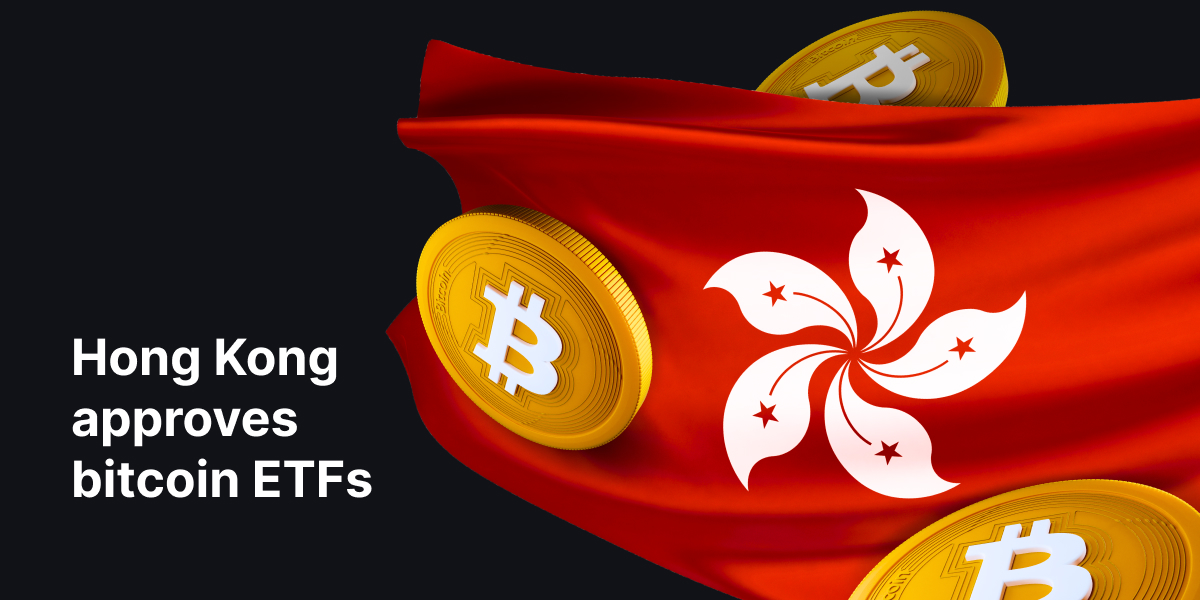The importance of the strongest currencies in the world is reflected in their stability and purchasing power. Stronger currencies are typically associated with better economies, reduced inflation, and higher living standards.
Because their currency is worth more than that of the other country, people and businesses can buy products and services from other nations at a lower price when their currency is strong. This may result in more chances for investment and commerce, as well as easier access to global markets.
Strong currencies also give domestic and global investors stability and confidence, which can encourage additional investment in an economy. In turn, this can contribute to job creation, economic growth, and an improvement in residents’ general standards of living.
By understanding the world’s top currencies, you can begin to understand the movements of the Forex markets. This can narrow the focus of trading, and therefore lead to more informed decisions. The strongest currency in the world traded against a less valuable currency would obviously make more sense than trying to fight the momentum of the markets.
In this article, we are trying to disseminate the difference between valuable currencies, and those that would be better-suited trading against, the very job of a foreign currency market speculator.
Criteria for Determining Currency Strength
The strength of a currency is determined using a variety of parameters. Here are a few examples:
Interest rate: The value of a nation’s currency is impacted by the interest rate that its central bank sets. Having a higher interest rate draws foreign investment and boost currency demand, which can improve the value of the currency.
Inflation: Over time, inflation reduces a currency’s value. The currencies of low-inflation nations are often stronger than those of high-inflation nations.
Political stability: A stable political climate often boosts the value of a currency because it gives investors more confidence and lessens the possibility of abrupt changes in governmental policies.
Economic indicators: A currency’s value can be impacted by economic statistics such as GDP, employment rates, and trade balances. A stronger currency is typically a result of a robust economy.
Trade: The value of a nation’s currency may be influenced by its trade balance. Export-oriented nations often have stronger currencies than import-oriented nations (where imports outpace exports).
Debt: A nation’s level of debt may have an impact on the value of its currency. High debt levels can make a country’s currency weaker because they make people less confident in its capacity to pay off its commitments.
Market sentiment: The value of a country’s currency can be impacted by how people perceive its economy and political climate generally. A stronger currency can result from a positive market attitude, whilst a weaker currency can result from a negative market emotion.
These are only a few of the criteria and variables are taken into consideration when assessing a currency’s strength. Natural catastrophes, geopolitical developments, and global economic trends can all have an effect. In such times that are tumultuous, specific currencies will attract inflows for their “safe haven status.” These included the US dollar, Swiss franc, and even the Cayman Islands dollar.
Exchange Rates
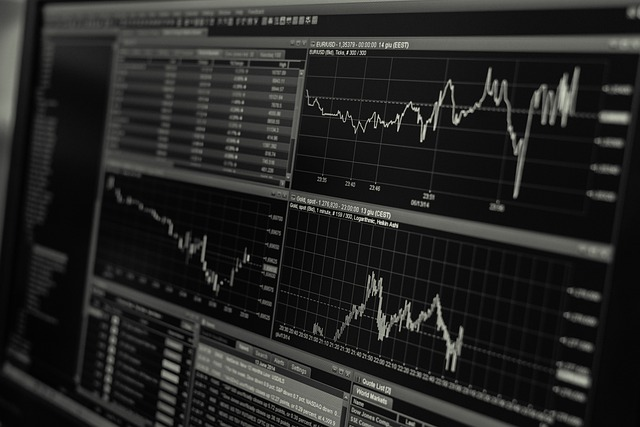
Exchange rates are a key factor in determining how strong a currency is. A currency’s value in respect to another is expressed as an exchange rate, which is based on the supply and demand of various currencies in the world foreign exchange market.
A nation’s currency tends to grow in value when there is a large demand for it, making it stronger in comparison to other currencies. In contrast, a currency’s exchange rate tends to decline in times of low demand, making it weaker in comparison to others.
A country can profit in a number of ways from a strong currency. For instance, as it requires fewer units of the home currency to buy foreign currencies, it may result in reduced pricing for imported items. As a result, inflation may be reduced and consumers’ standards of living may rise.
A country’s exports may become more expensive due to a strong exchange rate, which could harm industries that depend on exports. A strong currency can, however, also convey to investors that a nation has a strong economy and political stability, which can encourage more investment and economic growth.
A weak exchange rate, on the other hand, can also have benefits and drawbacks. A weaker currency can increase export competitiveness and benefits industries that depend on exports. However, when imported items become more expensive, it might also result in rising inflation. The inflation rate is a major influence on the currency value.
Economic Indicators
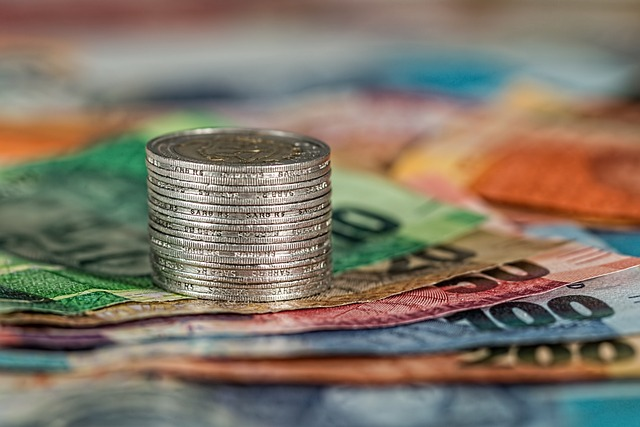
A currency’s strength can be significantly impacted by economic metrics like GDP and unemployment rates. The following are some ways they might influence a currency:
Gross Domestic Product (GDP): The value of all products and services generated inside a nation’s borders is referred to as the GDP. A healthy economy is often indicated by a high GDP, which might result in a stronger currency. Investors are frequently drawn to nations that are experiencing rapid economic growth, which might enhance the demand for the currency. One example would be the highest currencies, which tend to have a lot of correlation with oil exports.
Trade balances: The strength of a currency can be affected by the trade balance, which is the difference between a nation’s exports and imports. Since demand for a currency rises when exports are strong, nations with a trade surplus (exports that are more than imports) typically have stronger currencies. As demand for a currency decline when imports are strong, countries with a trade deficit (imports that exceed exports) typically have weaker currencies.
Rates of inflation: Over time, inflation reduces a currency’s ability to buy things. Countries with low rates of inflation typically have stronger currencies because their currency’s buying value is maintained. On the other hand, nations with high inflation rates typically have weaker currencies since their currency’s purchasing value is reduced.
Simply put, by showing the state of a nation’s economy as a whole, economic indicator like GDP and unemployment rates can affect the strength of a currency. While a bad economy tends to make a currency weaker, a robust economy tends to boost one. This is going to be the same with every currency in the world.
Political Stability
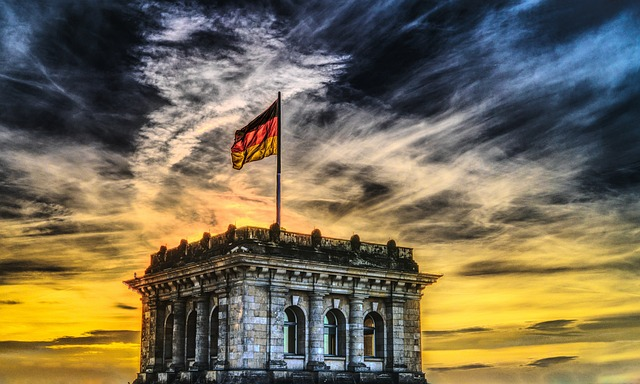
Political stability has a considerable impact on currency strength since it directly affects investor confidence, economic performance, and the smooth operation of a country’s financial system. Political stability has the following effects on a currency’s strength:
Investors perceive less risk in politically stable situations, which promote international investment. Foreign investment in a nation necessitates the purchase of local currency, which boosts demand and strengthens the local currency. In contrast, political unrest can result in capital flight as investors try to hedge their bets against uncertainty, which weakens the currency.
Political stability makes it possible for the government and central bank to carry out efficient fiscal and monetary policies, which are crucial for upholding a strong currency. Uncertain political environments can result in inconsistent policy decisions, which can exacerbate economic issues and have a negative effect on a currency’s value.
Governments can execute sensible fiscal and monetary policies to reduce inflation, which generally promotes price stability in a stable political climate. A currency weakens due to the erosion of its buying power brought on by high inflation. Political unrest can cause the economy to suffer and make it more difficult for the government to properly control inflation.
Credit rating companies determine a nation’s creditworthiness by taking into account variables including political stability. Higher credit ratings are typically the outcome of a more stable political environment, which lowers borrowing costs and increases investor confidence. A stronger currency is also influenced by a higher credit rating. On the other hand, political unrest may result in a lowered credit rating, raising borrowing costs and weakening the value of the currency.
Political stability is a key factor in influencing a currency’s strength. The value of a currency is positively impacted by a stable political climate because it fosters economic growth, allows for successful fiscal and monetary policies, aids in controlling inflation, and helps to maintain a favorable sovereign credit rating. However, political unrest might have a detrimental effect.
Historically speaking, there are a few currencies in the world that have “safe haven status.” This includes the Swiss franc, as Switzerland is known for its neutrality and banking sector. It also includes the United States dollar, and other less-known currencies in the world used as safe haven assets include the Cayman Islands dollar and the Singapore dollar.
Top 10 Strongest Currencies
Although there are some clear winners in this list, not all of these national currency markets are accessible to retail traders. For example, it is very difficult to trade the Omani rial. The Omani rial is thinly traded and is typically used in financial transactions that cross that national border. The market would simply be too illiquid to trade. That being said, the strongest currencies tend to have some relatively similar traits. Although the highest currency on this list is valuable, it isn’t normally traded. With this, keep in mind this currency list is from a value perspective more than anything else.
10. New Zealand dollar (NZD)
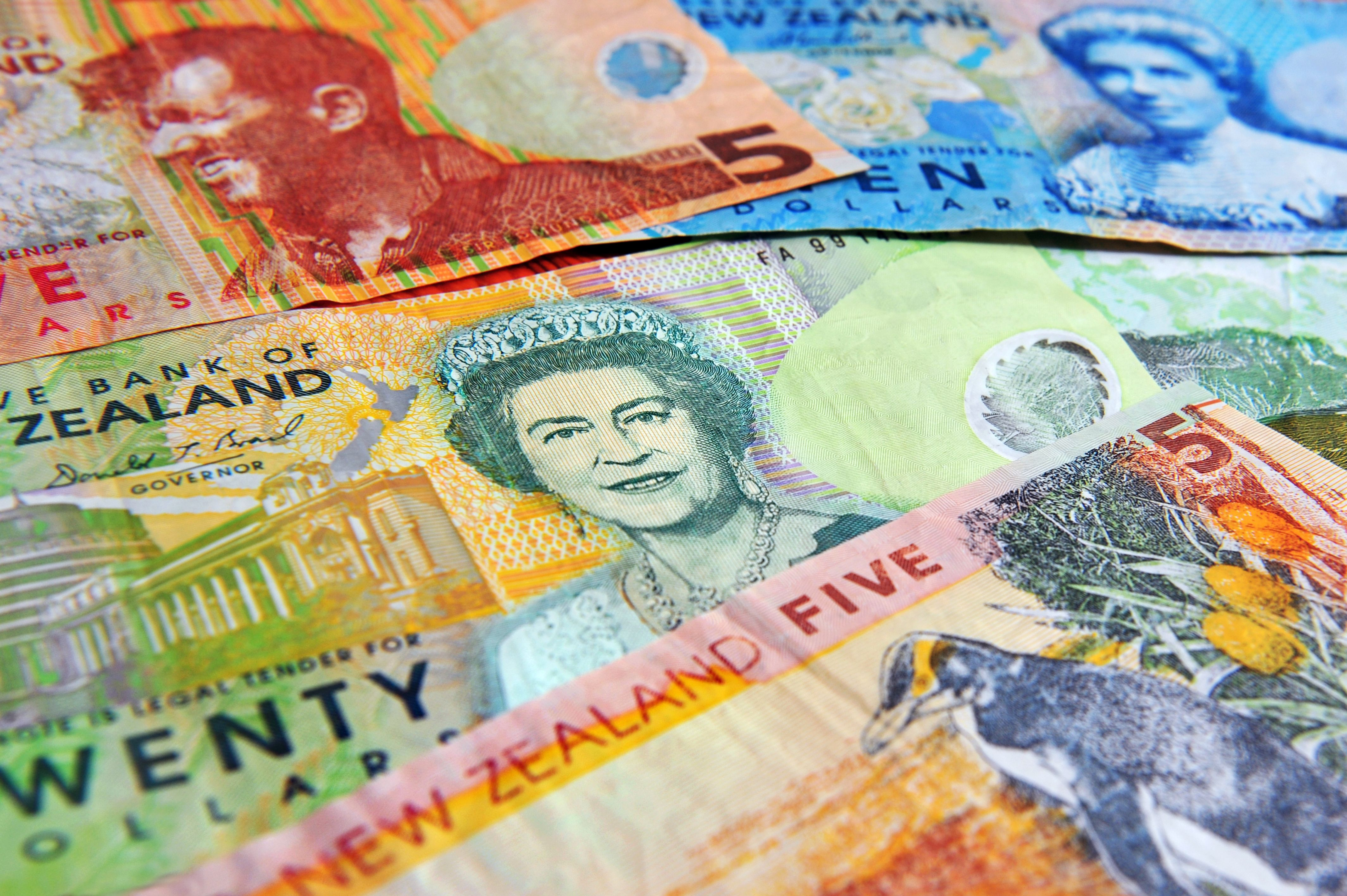
Not only does New Zealand use the currency, but so do the Cook Islands, Niue, Tokelau, and the Pitcairn Islands all use the New Zealand Dollar (Currency code = NZD), also known as the “Kiwi,” as their official unit of exchange. On July 10, 1967, it was first used to replace the New Zealand Pound at a rate of $2 per pound. The NZD is divided into 100 cents, and both coins and banknotes are in use.
Despite not being regarded as a significant reserve currency like the USD, EUR, or JPY, several national governments and financial institutions nonetheless keep NZD in their foreign exchange reserves. This is a result of the stable political and economic climate in New Zealand, as well as the country’s comparatively high-interest rates when compared to those of other developed economies. This is the main reason why it is considered one of the highest currencies.
The NZD is frequently referred to as a currency that is driven by commodities, which means that its value is closely correlated with the prices of goods, especially those that New Zealand exports. Agriculture-related goods (including dairy, beef, and wool) and raw materials (such as minerals and wood) make up the majority of the nation’s exports. As a result, changes in the price of commodities on a worldwide scale can have a big effect on how much the NZD is worth.
Because it has historically had significantly higher interest rates than other industrialized nations like Japan and Switzerland, the NZD has drawn carry trade operations. Carry trades include taking out a loan in a currency with a low interest rate and investing the money in a currency with a higher yield in an effort to profit from the difference in interest rates. Carry trades can be dangerous, though, as they expose investors to changes in interest rate policy and currency exchange rates.
One of the most actively traded currencies globally, the NZD normally comes in at approximately 10th place in terms of the daily trading volume. NZD/USD is the currency pair that is most often traded. The NZD is a well-liked option for traders and investors due to its liquidity and correlation with commodity prices throughout the world.
9. Canadian dollar

Canada’s national currency is the Canadian Dollar (Currency code = CAD), also referred to as the “Loonie.” There are coins and banknotes in circulation that are each worth one hundred cents. Due to Canada’s stable economy, a wealth of natural resources, and close trading ties with the United States, the CAD is the sixth most traded currency in the world.
A number of governments and financial organizations keep Canadian Dollars as part of their foreign exchange reserves. This is a result of Canada’s stable political landscape, tightly controlled financial system, and solid economic foundation.
The CAD is frequently referred to as a currency that is driven by commodities, which means that its value is highly correlated with the prices of goods, especially those that Canada exports. The nation is a significant exporter of natural resources, including minerals, forestry goods, natural gas, oil, and natural gas products. As a result, changes in the price of commodities around the world, particularly oil, can have a big impact on the value of CAD.
Canada’s greatest trading partner, the United States, enjoys close commercial ties. As a result, changes in US economic conditions and bilateral trade agreements have an impact on the CAD. The strength of the US Dollar (USD) and economic statistics from both countries frequently have an impact on the value of the Canadian Dollar (CAD).
One of the most popular currencies in the world, the Canadian Dollar often ranks fifth or sixth in terms of the daily trading volume. The USD/CAD currency combination is the most frequently traded one there. The Canadian dollar is a well-liked currency among traders and investors due to its liquidity and linkage with world commodities prices.
8. US dollar
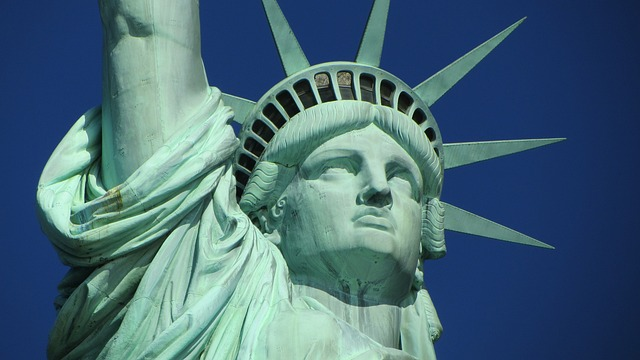
The US Dollar (Currency code = USD), also known as the “greenback,” is the country’s official currency. There are coins and banknotes in circulation that are each worth one hundred cents. The US dollar is the main global currency and an important part of the world economy. While there are currencies stronger than USD, the US dollar is still the most important currency in the world. In fact, it is a legal tender in almost all countries.
As part of their foreign exchange reserves, central banks, governments, and financial institutions hold the USD, which is the world’s primary currency. The US economy’s size and strength, the nation’s political stability, and people’s confidence in US institutions all contribute to its standing as the world’s most important currency.
As the main currency for worldwide trade, the USD is widely utilized. Many countries invoice their imports and exports in USD, and many commodities, including gold and oil, are valued in US dollars. For firms and governments, the broad usage of the dollar in international trade lowers currency risk and transaction costs.
Investors frequently go for protection in US dollar-denominated assets during periods of economic turbulence or geopolitical unrest since the USD is regarded as a safe haven currency. During times of financial turbulence around the world, demand for the US dollar and assets denominated in dollars, such as US Treasury bonds, often rises, strengthening the USD.
Over 80% of all foreign exchange transactions include the US dollar, making it the most traded currency in the world. Being the world reserve currency It is a well-liked option for traders and investors because of its high liquidity and crucial position in global finance.
The benchmark currency for the world economy is the US dollar. Many currencies are either pegged to or tightly related to the value of the USD, and the majority of exchange rates are quoted against the US dollar. The value of other currencies and the overall stability of the global financial system can both be strongly impacted by the strength of the US dollar. Being the world’s most popular currency means that there is always a demand for the dollar, and in some ways makes it the strongest currency in the world. In fact, in times of trouble, the US dollar and the Swiss franc are the two “go-to currencies.” In times of economic strength, traders will sell the USD, in favor of currencies like the Australian dollar, which is tied to economic growth. In times of strength, the AUD can be one of the highest currencies as far as appreciation is concerned.
7. Euro
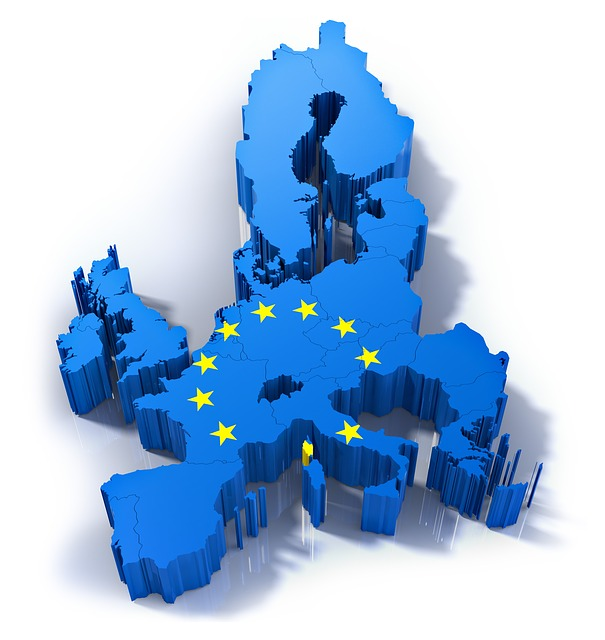
19 of the 27 nations that make up the European Union (EU) use the Euro (Currency code = EUR) as their official currency. The Euro was first introduced on January 1, 1999, and has 100 cents worth of coins and banknotes in circulation.
As part of their foreign exchange reserves, central banks, governments, and financial institutions hold the Euro, which is the second largest reserve currency in the world. The economic might and stability of the Eurozone currency union as well as the political clout of the European Union account for its position as a major currency.
By lowering transaction costs, removing currency risk, and fostering price transparency, the Euro has made economic integration inside the Eurozone easier. This has boosted intra-Eurozone trade and investment, which has improved the region’s economic performance and the value of the Euro.
International trade, both inside and outside the Eurozone, makes extensive use of the Euro. The Euro is a vital component of the world trading system since so many nations invoice their imports and exports in it and because some commodities are priced in it.
Over 30% of all international currency transactions use the Euro, making it the second most traded currency in the world. The EUR/USD currency pair is the most frequently traded one. The Euro is a common choice for traders and investors due to its liquidity and use in international trade.
The major objective of the European Central Bank’s (ECB) monetary policy for the Eurozone is to ensure price stability. The value of the Euro as well as the state of the world financial markets may be significantly impacted by the ECB’s decisions regarding rates and other policy instruments.
6. Cayman Islands dollar
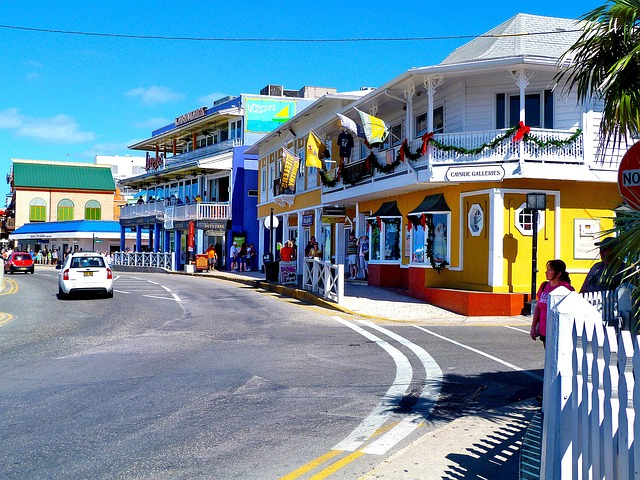
The Cayman Islands, a British Overseas Territory in the Caribbean, use the Cayman Islands Dollar (Currency code = KYD) as their official currency, instead of the British pound. Coins and banknotes in the form of the KYD, which is denominated into 100 cents, are in use. The Cayman Islands Dollar’s value is stable and predictable because it is tied to the US Dollar (USD) at a set exchange rate of 1 KYD = 1.2 USD.
The Cayman Islands are renowned as a significant offshore financial hub that draws corporations and affluent people from all over the world because of its advantageous tax laws, stable political environment, and well-regulated financial services sector. As a result, the territory has seen a substantial influx of international capital and the formation of numerous banks, hedge funds, and other financial institutions. Because of this, there is a “built-in” demand for the Cayman Islands dollar. This is much like the Swiss franc, as Switzerland is also a hub for hedge funds.
Due to its limited usage, which is restricted primarily to transactions within the Cayman Islands, the KYD has little significance in the world economy. The currency is not frequently traded on international foreign exchange markets, and because of its fixed peg to the United States Dollar, its value does not fluctuate noticeably.
5. British pound
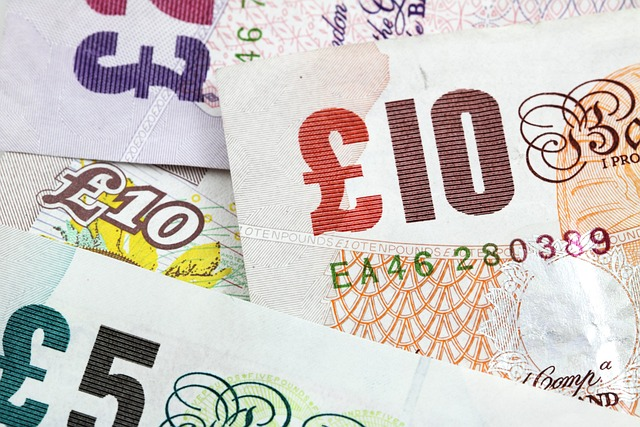
The United Kingdom, which consists of England, Scotland, Wales, and Northern Ireland, uses the British Pound Sterling (Currency code = GBP), also known as the “Pound,” as its official currency. With coins and banknotes in use, the GBP is divided into 100 pence. One of the oldest and most well-known currencies in the world, the British Pound has long been a vital component of the world economy. It is also the oldest currency in this list, dating all the way back to the first Pound Sterling in 775 AD.
As part of their foreign exchange reserves, central banks, governments, and financial organizations keep large amounts of the British pound. The United Kingdom’s historical clout and economic might, as well as the stability of its political and financial systems, account for its role as a major currency.
Both inside and outside of the United Kingdom, commerce involving the British Pound Sterling is common. British Pounds are a common benchmark for pricing several goods and are used by many nations to invoice imports and exports. Because of how frequently it is used in international trade, the pound is a crucial component of the world trading system.
One of the most popular currencies in the world, the British pound regularly comes in fourth place in terms of the daily trading volume. The GBP/USD, sometimes referred to as “Cable,” is the currency pair that is most frequently traded. The GBP is a well-liked option for traders and investors due to its liquidity and long-standing reputation.
One of the major financial hubs in the globe is London, the capital of the United Kingdom, which is home to numerous banks, investment companies, and other financial institutions. The importance of the British pound in the world economy is increased by London’s standing in the financial sector.
4. Jordanian dinar
Jordan’s official currency is the dinar (Currency code = JOD). Coins and banknotes of the denomination of 1000 fils or 100 piastres are in use. The value of the Jordanian Dinar is stable and predictable since it is tied to the US Dollar (USD) at a fixed exchange rate, which is currently set at 1 JOD = 1.41 USD. Even though it is not a significant currency in the world economy, the Jordanian dinar is significant for Jordan and the Middle East. The Jordanian dinar should be thought of as a “regional currency”, even if it is one of the strongest currencies.
Due to its relatively limited usage, which is restricted primarily to transactions within Jordan, the JOD has little impact on the global economy. The currency is not frequently traded on international foreign exchange markets, and because of its fixed peg to the USD, its value does not fluctuate noticeably.
There are many Jordanians working overseas, and their remittances have a big impact on the economy of their home nation. Jordan also receives a sizable amount of foreign assistance from nations like the US and the EU. The foreign exchange inflow contributes to the stability of the Jordanian Dinar and the economy as a whole.
Jordan maintains economic ties with a number of nations in the Middle East and North Africa region in addition to other nations worldwide. Although the United States Dollar and other major currencies are frequently used for bigger international transactions, the Jordanian Dinar helps to facilitate trade within the region.
3. Omani rial
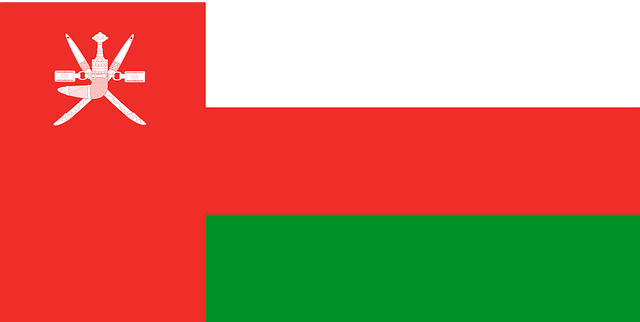
The Sultanate of Oman uses the Omani Rial (Currency code = OMR) as its official currency. There are coins and banknotes in use, each worth one thousand baisas. The Omani Rial’s value is stable and predictable because it is tied to the US Dollar (USD) at a fixed exchange rate of 1 OMR = 2.6008 USD. Although the Omani Rial is not a significant currency in the world economy, it is important for the Gulf Cooperation Council (GCC) and the Omani economy.
The OMR is protected from extreme volatility by being tied to the USD at a fixed exchange rate, which gives the currency stability. This peg aids the government of Oman in managing inflation, preserving price stability, and promoting economic expansion.
Due to its relatively limited usage, which is restricted primarily to transactions within Oman, the OMR has little impact on the global economy. The currency is not frequently traded on international foreign exchange markets, and because of its fixed peg to the USD, its value does not fluctuate noticeably.
Oman is a big oil producer, and the majority of its exports are petroleum products. The health of the oil industry and the level of world oil prices have a significant impact on the stability and strength of the Omani Rial. Global oil price fluctuations may have an effect on tax collections, foreign exchange holdings, and the state of the Omani economy as a whole.
The Gulf Cooperation Council (GCC), which also consists of Bahrain, Kuwait, Qatar, Saudi Arabia, and the United Arab Emirates, includes Oman as a member. The Omani Rial helps to promote trade within the region, however, for bigger international transactions, the US Dollar and other major currencies are frequently utilized.
2. Bahraini dinar
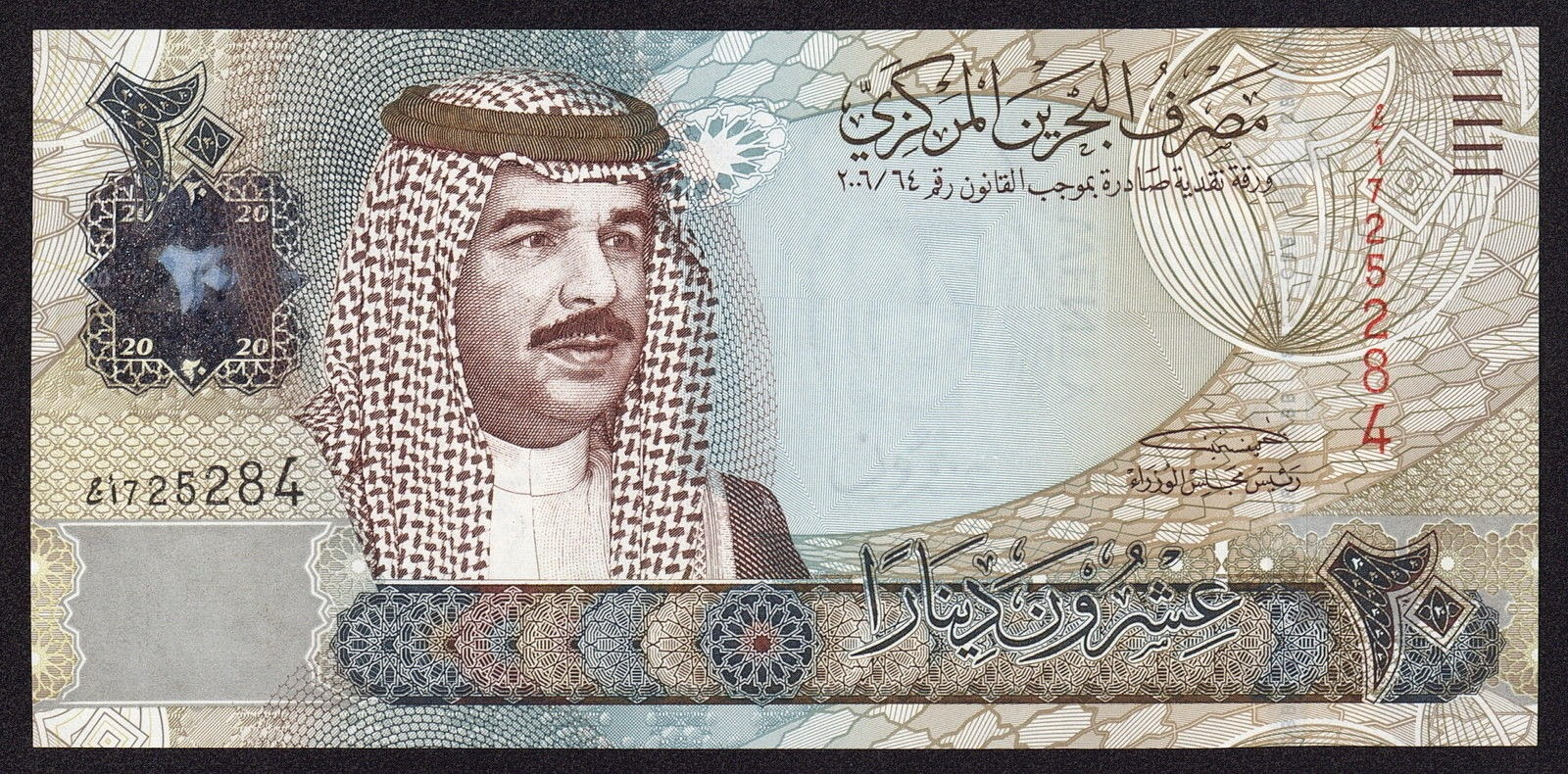
The official currency of Bahrain, an island nation in the Persian Gulf, is the Bahraini Dinar (currency code = BHD). Coins and banknotes of the denomination of 1,000 fils are in use. The Bahraini Dinar’s value is stable and predictable because it is tied to the US Dollar (USD) at a set exchange rate of 1 BHD = 2.65 USD. Even though the Bahraini Dinar is not a significant currency in the world economy, it is important for Bahrain and the Gulf Cooperation Council (GCC) region.
In comparison to some of its neighboring Gulf nations, Bahrain’s economy is rather diversified, with large contributions from the financial services, manufacturing, and tourism industries. Bahrain has made attempts to lessen its reliance on oil earnings, even though oil production still plays a significant role in the country’s economy. The effectiveness of these many sectors has an impact on the durability and stability of the Bahraini Dinar.
The Gulf Cooperation Council (GCC), which also consists of Kuwait, Oman, Qatar, Saudi Arabia, and the United Arab Emirates, includes Bahrain as a member. Although the US Dollar and other major currencies are frequently utilized for bigger international transactions, the Bahraini Dinar plays a role in enabling trade within the region.
With a wide range of banks, investment companies, and other financial organizations located there, Bahrain has established itself as a regional financial hub. The growth of Bahrain’s financial industry has boosted the Bahraini dinar’s stability and power.
1. Kuwaiti dinar
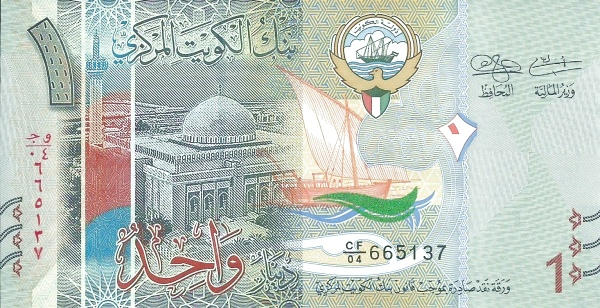
The official money of the State of Kuwait is the Kuwaiti Dinar (currency code = KWD). Coins and banknotes of the denomination of 1,000 fils are in use. The Kuwaiti dinar is renowned for having a high exchange rate when compared to other world currencies. The KWD’s value is stable and predictable because it is tied to a weighted currency basket, including the US Dollar. Although the Kuwaiti Dinar is not a significant currency in the world economy, it is significant in the Gulf Cooperation Council (GCC) and Kuwaiti economies. Kuwait is also known for its economic stability. Regardless of its size, it makes the top of this list for the most valued currency.
Kuwait produces a substantial amount of oil, and the majority of its exports are petroleum products. The health of the oil industry and the level of world oil prices have a significant impact on the stability and strength of the Kuwaiti dinar. Changes in oil prices can have an effect on tax collections, foreign exchange holdings, and the state of the Kuwaiti economy as a whole. Because of its correlation with oil exports, it has the highest currency value.
The Gulf Cooperation Council (GCC), which also consists of Bahrain, Oman, Qatar, Saudi Arabia, and the United Arab Emirates, includes Kuwait as a member. Although the US Dollar and other major currencies are frequently utilized for bigger international transactions, the Kuwaiti Dinar plays a role in enabling trade within the region.
How to Trade the World’s Strongest Currencies
The act of purchasing and selling currencies with the intention of profiting from the foreign exchange market is known as forex trading, sometimes known as foreign exchange trading or currency trading. In currency pair trading, one currency is bought while the other is sold, as in buying the Swiss franc against the Pound Sterling, or maybe buying the Canadian dollar against the US dollar, the world’s primary reserve currency.
With a daily transaction of over $6 trillion, the currency market is the biggest financial market in the world. It is accessible to traders from all around the world and is open every day of the week, 24 hours a day.
Analyzing market trends, economic data, and other variables that may have an impact on currency values is part of forex trading. Trading choices are made using a range of tools and strategies, including technical analysis, fundamental analysis, and sentiment analysis.
Forex trading involves certain risks, just like any other financial market. To reduce possible losses, traders must have a thorough understanding of the market and employ effective risk-management techniques. Successful forex traders often possess a trifecta of wisdom, competence, and self-control.
Understanding the fundamental ideas of forex trading, such as currency pairs, exchange rates, the inflation rate of these countries, and order types, is crucial before you begin trading. To get started, you may discover a variety of information online, including lessons, articles, and videos.
A trading strategy is necessary to keep you motivated and organized. Your trading objectives, risk management techniques, and the kinds of deals you intend to execute should all be included.
Most brokers have demo accounts, which let you practice trading without having to risk real money. PrimeXBT is no different and allows you to test a strategy before you start trading with real money, which is the first step in a trader’s career.
It’s crucial to carefully control your risk when trading forex because there is a significant amount of danger involved. As a result, you should place stop-loss orders to limit your losses and refrain from trading with capital that you cannot afford to lose. Because of this, it’s critical to keep up with the most recent news and events that could affect currency prices because a range of economic and political factors affect the FX market.
Disciplined and committed traders stick to their trading strategies. This is staying away from hasty trades and adhering to your goal even when things don’t go according to plan.
Forex trading is not a way to get rich quickly. To become a successful trader, one must have patience, practice, and time. Expecting to reap enormous riches overnight is unrealistic; be ready to make mistakes along the way and learn from them.
Conclusion
When looking to trade the forex market, you need to keep an eye on several factors. The seven major currency pairs are probably where you should start, as this would include the Australian dollar, Euro, Pound sterling, Japanese yen, Swiss franc, New Zealand dollar, and Canadian dollar against the US dollar. All of these currencies are important, and as a result, you could be trading the fourth most traded currency in the world, the JPY, against the USD, making this a common traded currency pair. You should avoid thinly traded currencies such as the Jamaican dollar, Chilean peso, or others like that, and stay with the more common currencies.
You should also keep an eye on what specific factors can drive the value of a currency. Some currencies are driven by the oil and gas industry, and as a result, many of the top 10 strongest currency in the world is based in the Middle East. The most expensive currency in the world is the Kuwaiti dinar, but it’s worth noting that many of the most valuable currencies aren’t easily accessible to the common person to trade. At the start of your career, you should focus on stable currencies, trying to trade the highest valued currency against best value currency over and over again.
Keep in mind that just because a currency is one of the highest currencies does not mean it makes sense to trade, or even that you can. The idea is to profit, and although the highest currencies seem like a great idea to invest in, it is the act of getting out of the trade that makes them difficult to invest in. At the end of the day, you are trying to buy the highest currency against the lowest currency that you can in a reasonable trading environment.
By trading the strongest currencies against the weakest currency you have available, you can let the momentum of the market create profit for you. This is determined by a lot of different factors, but making sure to follow the overall trend of the market is by far the most important thing you can do. After all, you may not be able to trade the strongest currency, the KWD, but you can trade the strongest currency on the platform. This means that you are going to be able to follow the lead of the market and grow your account.
In order to understand the art of foreign exchange market trading, there are some FAQs that you should know.
What is the most expensive currency?
By valuation, the most valuable currency in the world is the Kuwaiti dinar. This is helped by a plethora of reasons, not the least of which is that it is pegged at roughly 3.3 USD. As we have explored in this article, the most valuable currencies tend to be based on a fixed exchange rate. The most valuable currency is a bit of an open question, but as a general rule, you are looking toward the Gulf Cooperation Council currencies as they have fixed exchange rates. However, keep in mind that the global market doesn't trade these very often.
What country has the highest currency?
The Kuwaiti dinar takes this honor. However, it is not a widely traded currency globally, so this is rarely dealt with by retail traders. However, the largest currency in the world is the US dollar, so it comes down to how you look at it. The "highest currency" is a bit of a mixed picture.
Why is Kuwait currency so high?
Due to Kuwait's size, sizeable oil reserves, and stable political and economic climate, the Kuwaiti dinar is noted for its high exchange rate when compared to other foreign currencies. The robustness and stability of the Kuwaiti economy are reflected in this high exchange rate.
What is the most stable currency?
This is a question that has different answers, depending on the context. Keep in mind that a lot of the GCC currencies are pegged to the USD and others, so they are by their very nature a stable currency. However, there are also other currencies that are considered to be stable, such as the Swiss franc and Singapore dollar, despite being a free-floating market.


